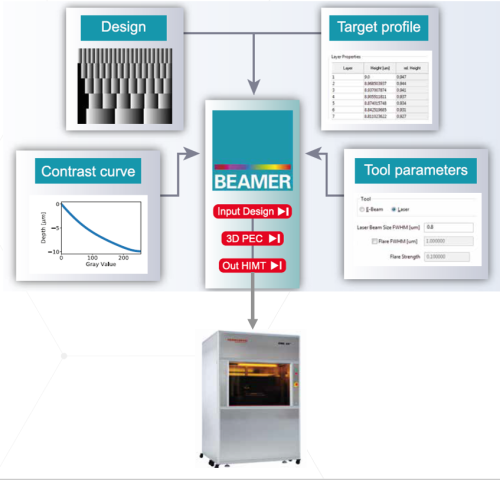Laser Grayscale Lithography
Motivation:
Grayscale laser lithography is used to create 3D microstructures in photoresist. In contrast to traditional, or binary, lithography (photoresist is either completely exposed or unexposed), grayscale lithography creates intensity gradients, which translate into a resist topography. The resulting topography is strongly influenced by geometry-dependent proximity effects, lateral development and a non-linear dose dependence of the resist. Finding the optimal combination of these factors is a major challenge for grayscale lithography. Iterative optimization is time consuming and fails for complex shapes.
Solution:
Using the 3D-PEC module of BEAMER enables to get a good match to the target without the need of iteration. This model- based correction takes into account the resist contrast curve, models the laser exposure and development and modifies the dose assigned to each pixel based on strength of proximity effects from its surroundings.
Two application notes are available:
- General_Laser_Grayscale_Lithography introduces detailed correction process for a general laser tool.
- HIMT_Laser_Grayscale_Lithography explains correction process using HIMT machine.

